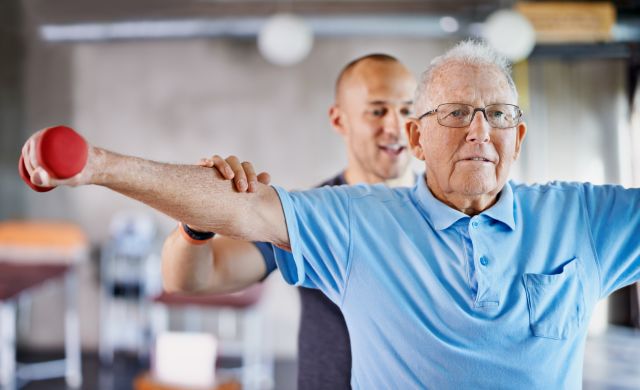Updated on November 21, 2023.
Vascular parkinsonism (also known as VP) is a Parkinson’s disease-like condition. The movement issues that stem from VP are caused by small strokes that occur in a section of the brain called the basal ganglia, which controls movement, among other functions. Here's what to know about vascular parkinsonism and how it relates to Parkinson's disease.
VP versus Parkinson’s
While the two conditions share a number of symptoms, there are important differences. Parkinson’s typically progresses gradually. But because strokes can happen suddenly, VP can appear or worsen suddenly. VP most often affects the lower body. There may be other signs of stroke that occur with VP, such as slurred speech or cognitive impairment, and sometimes incontinence.
Risk factors of vascular parkinsonism
Because VP is essentially a series of strokes, risk factors for VP are the same as risk factors for stroke. They include:
- Older age
- High blood pressure
- Diabetes
- History of stroke
- Peripheral vascular disease
- Smoking
- High cholesterol
- Obesity
Diagnosis and treatment of VP
Both Parkinson’s and VP can be difficult to diagnose, as there are no blood tests for either. But unlike Parkinson’s, evidence of VP can often be detected through an imaging test like a computed tomography (CT) scan or magnetic resonance imaging (MRI). Abnormal brain scans are present in nearly all VP cases and will often show evidence of multiple small strokes in the basal ganglia.
Since VP doesn’t function the same way as Parkinson’s, it doesn’t respond to the same treatments. Parkinson’s treatment usually involves drugs that can be converted to dopamine, mimic dopamine, or stop the destruction of dopamine in the brain.
VP, on the other hand, is usually treated by trying to limit stroke and heart disease risk. Getting regular exercise, quitting smoking, eating a healthy diet, controlling blood pressure and diabetes, and taking certain medications that help prevent blood clots or lower cholesterol levels can all reduce the chances of more strokes—and, in turn, lower the risk of VP.







